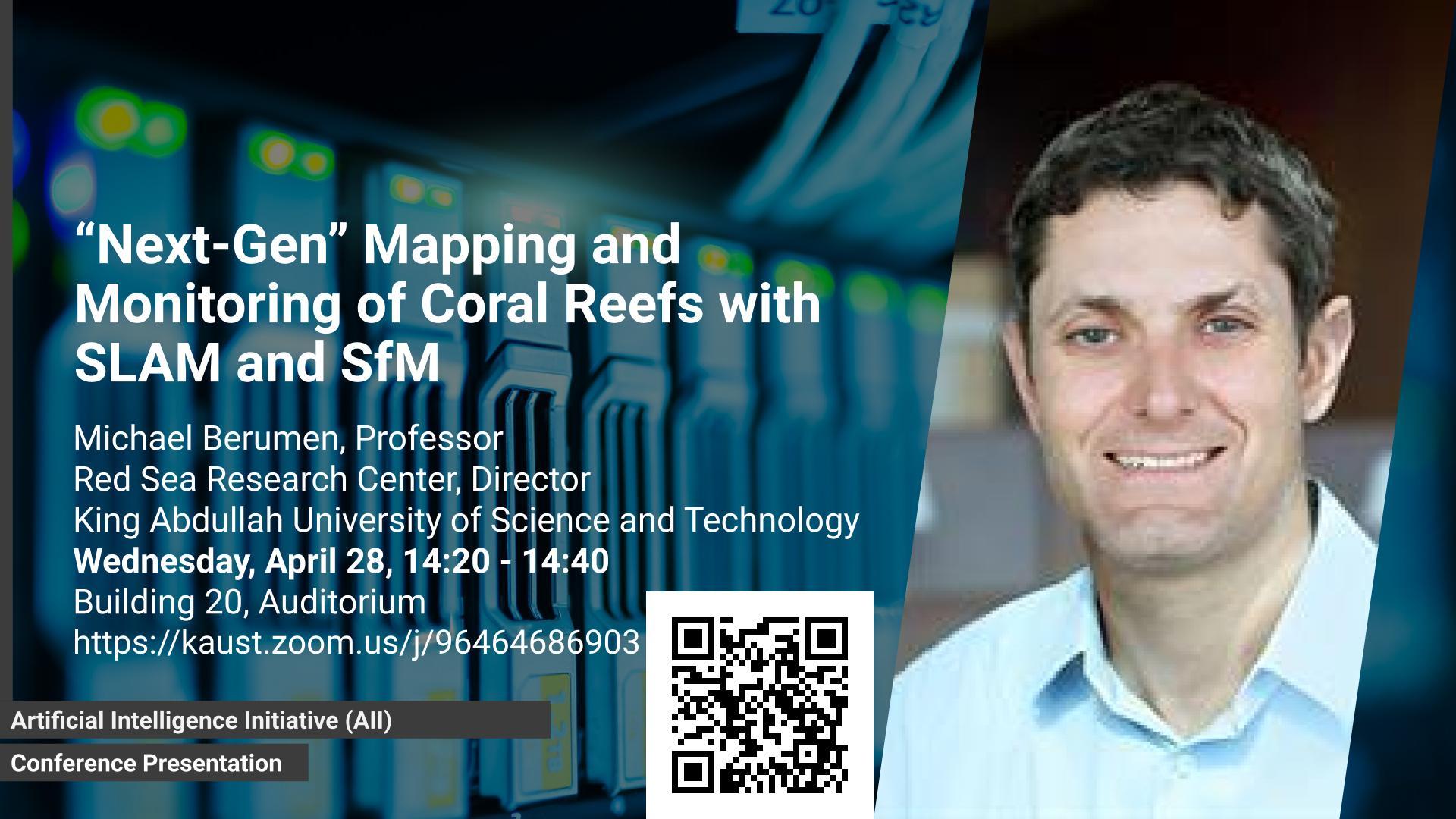Abstract
The Red Sea Development Company (TRSDC), one of Saudi’s premiere GigaProjects, aims to develop a world-class, hyper-luxury resort complex in the Red Sea. The project is located between the coastal cities of Umm Lujj and Al- Wajh, encompassing one of the Red Sea’s most unique geological and biological habitats, the Al-Wajh lagoon. This location includes the Red Sea’s largest barrier reef and the Red Sea’s largest lagoonal habitat (1500km2), within which can be found nearly 100 islands and many species not known from any other part of the world. As a result of TRSDC’s commitment to protecting the natural environment, surveys of the site’s coral reefs are planned at an unprecedented scale. Under the KAUST AI Initiative, we aim to develop a framework for large-scale, semi-autonomous implementation of Simultaneous Localization and Mapping (SLAM) and Structure from Motion (SfM) of coral reefs to facilitate TRSDC’s ambitious goals, including three key aims:
1) establish a baseline of current environmental state, including coral community condition, abundance, and health;
2) create a mechanism for high-resolution detection of change in various environmental indicators; and,
3) pioneer a large-scale demonstration of automation of the various components (surveys, coral identification, and 3D reconstruction). We propose to achieve these aims through a combination of in-water surveys, supervised classification of videos, SfM to create 3D reconstructions of reefs and individual corals, SLAM with autonomous underwater vehicles (AUVs), and, eventually, a series of permanent “beacons” to facilitate the AUVs moving from site to site and autonomously monitoring the health of individual corals at a large scale.
Brief Biography
Michael Berumen is the Director of the Red Sea Research Center and a Professor of Marine Science and Engineering in the BESE Division at KAUST. Mike received a Zoology degree from the University of Arkansas in 2001. He then attended James Cook University in Australia to pursue graduate studies in coral reef ecology, specializing in life history and ecology of butterflyfishes. He was awarded the PhD in 2007. Mike accepted a postdoctoral fellowship at the Woods Hole Oceanographic Institution, where he focused on larval connectivity in coral reef fishes. During his time in Woods Hole, Mike began working in the Red Sea in 2008 in partnership with a new university in Saudi Arabia - the King Abdullah University of Science and Technology (KAUST). Mike joined KAUST in July 2009 as a founding faculty member in the Red Sea Research Center. His research focuses on advancing general understanding of Red Sea coral reefs and more broadly making contributions to movement ecology, which is a critical aspect of developing conservation plans in the marine environment.
